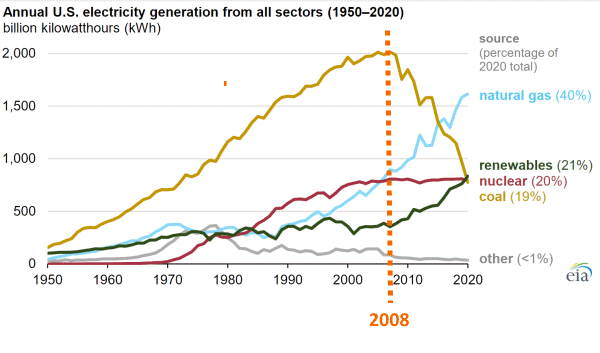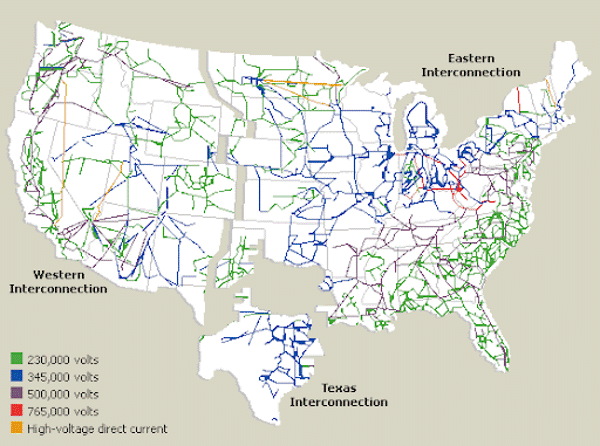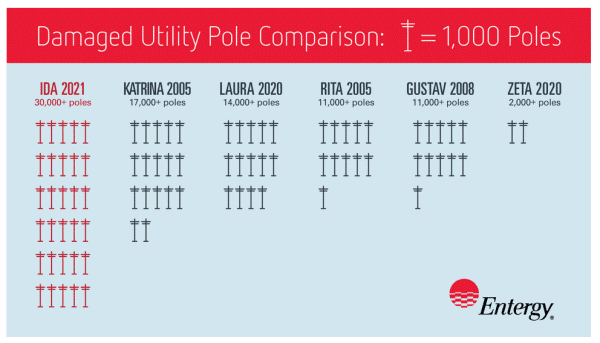Time for electric utilities to upgrade.
Navigation
Install the app
How to install the app on iOS
Follow along with the video below to see how to install our site as a web app on your home screen.
Note: This feature may not be available in some browsers.
More options
Style variation
-
Congratulations cowski on being selected by the Eng-Tips community for having the most helpful posts in the forums last week. Way to Go!
You are using an out of date browser. It may not display this or other websites correctly.
You should upgrade or use an alternative browser.
You should upgrade or use an alternative browser.
Upgrade electric utilities. Power outages should not be inevitable. 2
- Thread starter 1503-44
- Start date
- Status
- Not open for further replies.
-
1
- #2
SlideRuleEra
Structural
Interesting article. I see the author is a "long time researcher of the electric utility industry". Well, I'm a long time employee (and retiree) from an electric utility. I worked primarily in generation, but also on assorted (engineering) projects in other areas of the company.
IMHO, the author is dumbing down "the grid" to try to make his point. He paints the electric utility industry as stagnant and stuck-in-past.
"The Grid" is composed of four basic elements:
1) Generation
2) Transmission
3) Substations
4) Distribution
Let's look at them in their interconnected context, not the author's knock-them-down-one-at-time approach.
1) Start with generation. One graph tell the whole (recent and ongoing) story. Generation is changing, and it is changing really quick:

Look at the large scale changes since 2008. Large numbers of coal fired stations have come off-line since 2008. In that same time frame, pretty large numbers of natural gas and renewable have come on-line. These trends are continuing, accelerating, and expected to continue. With a trivial number of exceptions, the out-of-service coal stations are at different geographical locations than the new natural gas & renewables. So what does this mean...
2) Transmission lines that 12 years ago went to coal stations are now "unemployed". Transmission lines to gas and renewables that did not exist in 2008 have come into being.

So where do these transmission lines go...
3) Substations. These have to be located reasonable close to where the electricity is used. With population shifts, some substations have to enlarged, other deactivated, and new substations constructed. Which lead to...
4) Distribution. The author makes a big point about the large numbers of people who have lost power for extended time. One of his links to "prove" his point shows that it is the distribution system that is out (30,000+ poles) from Hurricane IDA:

Restoring (distribution) electric service often has to be performed one customer at a time. Sometimes, throwing a switch is the answer, other times, replace a series of broken poles, transformers, and conductors... and the utility does not know in advance exactly what material and equipment will be required for any specific customer. This has to be determined on the spot then dealt with.
In summary, my point is the entire electrical system is changing and changing quickly... and what is being replaced or added is not being done the way it was in the past. Modernization make sense, is more efficient, and saves money in the long term. Electric utilities, by necessity view business in the long term. But it takes time, the size of "the grid" is difficult to comprehend and while all this change is taking place electric utilities are striving to keep the power on to all customers... 24/7.
IMHO, the author is dumbing down "the grid" to try to make his point. He paints the electric utility industry as stagnant and stuck-in-past.
"The Grid" is composed of four basic elements:
1) Generation
2) Transmission
3) Substations
4) Distribution
Let's look at them in their interconnected context, not the author's knock-them-down-one-at-time approach.
1) Start with generation. One graph tell the whole (recent and ongoing) story. Generation is changing, and it is changing really quick:

Look at the large scale changes since 2008. Large numbers of coal fired stations have come off-line since 2008. In that same time frame, pretty large numbers of natural gas and renewable have come on-line. These trends are continuing, accelerating, and expected to continue. With a trivial number of exceptions, the out-of-service coal stations are at different geographical locations than the new natural gas & renewables. So what does this mean...
2) Transmission lines that 12 years ago went to coal stations are now "unemployed". Transmission lines to gas and renewables that did not exist in 2008 have come into being.

So where do these transmission lines go...
3) Substations. These have to be located reasonable close to where the electricity is used. With population shifts, some substations have to enlarged, other deactivated, and new substations constructed. Which lead to...
4) Distribution. The author makes a big point about the large numbers of people who have lost power for extended time. One of his links to "prove" his point shows that it is the distribution system that is out (30,000+ poles) from Hurricane IDA:

Restoring (distribution) electric service often has to be performed one customer at a time. Sometimes, throwing a switch is the answer, other times, replace a series of broken poles, transformers, and conductors... and the utility does not know in advance exactly what material and equipment will be required for any specific customer. This has to be determined on the spot then dealt with.
In summary, my point is the entire electrical system is changing and changing quickly... and what is being replaced or added is not being done the way it was in the past. Modernization make sense, is more efficient, and saves money in the long term. Electric utilities, by necessity view business in the long term. But it takes time, the size of "the grid" is difficult to comprehend and while all this change is taking place electric utilities are striving to keep the power on to all customers... 24/7.
JoshPlumSE
Structural
SlideRuleEra said:Start with generation. One graph tell the whole (recent and ongoing) story. Generation is changing, and it is changing really quick:
I love that graph. Thank you for posting it. It gives me some hope. We're making a lot of the right kind of changes. And, it's happening relatively fast. Though I know many will argue that it needs to happen faster. Also, I would argue that we should want to see the percent of nuclear energy increase faster too.
I'll acknowledge your good points about transmission too. But, I'll let those stand on their own.
-
1
- #5
SlideRuleEra
Structural
Thank you, Josh. Generation changes are happening at stunning speed. This is being driven primarily by high-usage industrial and similar customers who have direct power purchase contracts with electric utilities. They have a lot of bargaining power and are demanding lower rates. Coal cannot do that. Natural gas, especially high efficiency combined cycle plants can. A natural gas plant is cheap compared to coal and can be permitted, constructed, and brought on line quickly. Emissions are a fraction of even a modern coal unit.
A new factor that is in bringing renewables (mainly solar and wind) into the base load mix is utility scale battery storage.
A new factor that is in bringing renewables (mainly solar and wind) into the base load mix is utility scale battery storage.
JoshPlumSE
Structural
SlideRuleEra said:Emissions are a fraction of even a modern coal unit.
Yes, I have been arguing for a long time that the quickest, cheapest way to reduce carbon emissions right now was to replace coal with combined cycle natural gas. But, I didn't realize it was happening at the rate that was shown in your graph. That was pleasantly surprising.
Guest
Coal plants have been shutting down with regularity for a number of years now (and the air quality where I live downwind of the Ohio Valley has improved noticeably).
In CC gas plants CO2 is significantly reduced (but not eliminated). With a lifetime of 20 years and lower cost to build they provide a useful transition. Harmful emissions are effectively zero.
Even if coal gave zero carbon emissions, the harmful emissions (heavy metals, SO2) and the deadly practice of mountaintop blasting should be enough to ban them. However it is the economics that are working against coal - who today would make a massive investment in something with a 40-year life in such an uncertain political/regulatory environment?
"Everyone is entitled to their own opinions, but they are not entitled to their own facts."
In CC gas plants CO2 is significantly reduced (but not eliminated). With a lifetime of 20 years and lower cost to build they provide a useful transition. Harmful emissions are effectively zero.
Even if coal gave zero carbon emissions, the harmful emissions (heavy metals, SO2) and the deadly practice of mountaintop blasting should be enough to ban them. However it is the economics that are working against coal - who today would make a massive investment in something with a 40-year life in such an uncertain political/regulatory environment?
"Everyone is entitled to their own opinions, but they are not entitled to their own facts."
SlideRuleEra
Structural
ironic metallurgist said:...who today would make a massive investment in something (coal fired unit) with a 40-year life...
Nobody.
What utilities are struggling with is how to economically justify shutting down modern 10 to 30 year old coal fired units that were expected to have a 40-year life. But not shutting them down makes the utility's pricing noncompetitive. Retail customers usually don't have options on who provides their power... large scale customers with direct contracts do.
SlideRuleEra
Structural
rb1957 - Right you are and on a large scale, too. I should have said "Nobody in the USA".
At least China announced last week that they would stop building in other countries.
At least China announced last week that they would stop building in other countries.
Guest
SlideRuleEra said:At least China announced last week that they would stop building in other countries.
They won't slow down their aggressive loan sharking of 2nd and 3rd world countries.
(Stone Panda hack incoming in 3, 2, 1 ...)
"Everyone is entitled to their own opinions, but they are not entitled to their own facts."
Whatewer it was, power outages should not be - [URL unfurl="true"]https://vrenergy.com/[/url]
- Status
- Not open for further replies.
Similar threads
- Replies
- 12
- Views
- 2K
- Locked
- Question
- Replies
- 1
- Views
- 2K
- Replies
- 5
- Views
- 243
- Locked
- News
- Replies
- 0
- Views
- 291
- Locked
- News
- Replies
- 23
- Views
- 3K
